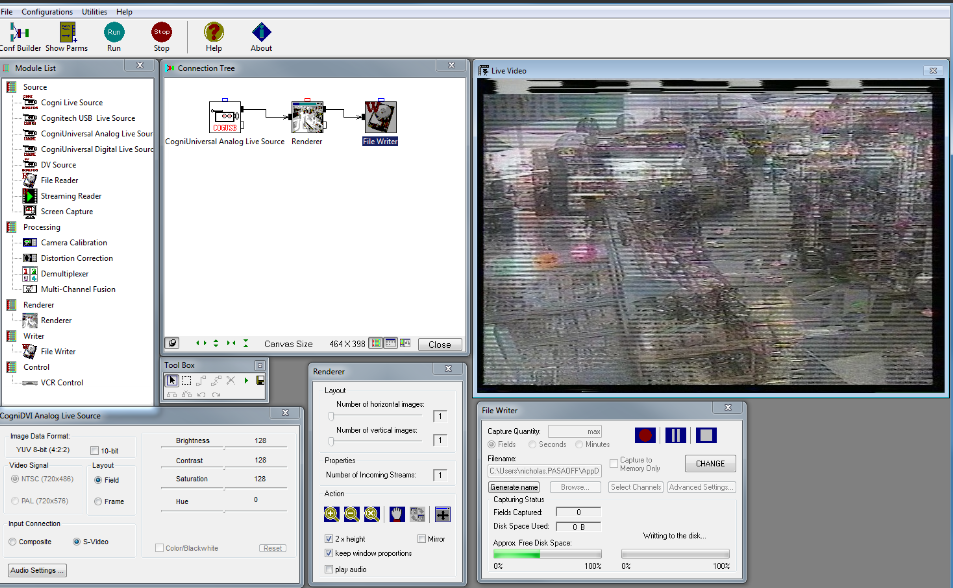In the realm of digital forensics, the clarity and precision of visual evidence can make or break an investigation. With the rapid advancements in technology, tools like Camera Calibration and Real-Time Lens Correction have become indispensable. These technologies ensure that the visual data collected is accurate and undistorted, providing a solid foundation for forensic analysis. This article explores the significance of these tools and how they enhance the capabilities of digital forensics professionals.
The Role of Camera Calibration
Camera calibration is essential in digital forensics as it corrects for any distortions caused by the camera lens and ensures that the images captured are true to life. This process involves determining the camera’s intrinsic and extrinsic parameters to accurately map the 3D world onto a 2D image.
How It Works
The Camera Calibration module in the Cognitech AutoMeasure software automates this process, guiding users through the steps with constant feedback. This includes:
- Intrinsic Parameters: Determining factors like the focal length, optical center, and lens distortion coefficients.
- Extrinsic Parameters: Identifying the position and orientation of the camera relative to the scene.
By calibrating the camera, investigators can ensure that the visual evidence is free from geometric distortions, which is crucial for accurate measurements and analysis.
Real-Time Lens Correction: Ensuring Visual Integrity
Lens distortion is a common issue that can significantly impact the accuracy of visual evidence. Real-Time Lens Correction addresses this by removing geometric distortions as the video is captured, ensuring an undistorted and true-to-life representation of the scene.
Key Benefits
- Enhanced Accuracy: Provides a clear and accurate view of the scene, essential for forensic analysis.
- Efficiency: Processes video in real-time, eliminating the need for time-consuming post-processing corrections.
- Reliability: Ensures that the visual data used in investigations is dependable and free from distortion-related errors.
Complementary Processing Modules
The efficacy of Camera Calibration and Real-Time Lens Correction is further amplified when integrated with other advanced processing modules, forming a robust toolkit for digital forensics.
Digital VCR Playback Control Protocol
This protocol enables investigators to control supported VCRs through VideoActive®, offering:
- Precise Navigation: Allows quick access to specific segments of video footage.
- Detailed Examination: Facilitates frame-by-frame analysis, crucial for identifying critical details.
Video Conversion for Enhanced Usability
Video Conversion is vital for working with various video file formats, ensuring that investigators can analyze any file, regardless of its original format. This module offers:
- Lossless Conversion: Converts difficult-to-read files to usable formats without compromising quality.
- Compatibility: Ensures seamless integration with forensic software, enabling thorough analysis.
Advanced Video Playback
The Video Playback module enhances the investigative process by providing:
- Real-Time Frame Accurate Playback: Allows real-time viewing with frame accuracy.
- Frame-by-Frame Analysis: Enables detailed scrutiny of each frame, essential for uncovering hidden details.
Impact on Digital Forensics Investigations
The integration of Camera Calibration and Real-Time Lens Correction into digital forensics has significantly enhanced the field’s precision, reliability, and efficiency. These tools ensure that the visual evidence is an accurate representation of the scene, free from distortions that could compromise the investigation.
- Improved Accuracy: Correcting lens distortions and calibrating cameras ensures that visual evidence is precise and reliable.
- Increased Efficiency: Real-time processing and automated calibration save valuable time for investigators.
- Enhanced Reliability: The ability to convert and analyze various video formats ensures comprehensive evidence analysis.
Conclusion
Camera Calibration and Real-Time Lens Correction are transformative technologies in digital forensics, ensuring that visual evidence is both accurate and reliable. These tools, combined with other advanced processing modules like Digital VCR Playback Control and Video Conversion, provide a comprehensive solution for forensic investigators. As technology continues to evolve, the importance of these tools in ensuring the integrity of visual evidence will only grow, making them indispensable in the pursuit of justice.

